Understanding the Digital Transformation in Dentistry
Digital dentistry is rapidly reshaping how oral health is diagnosed, treated, and maintained. Integrating cutting-edge technologies such as intraoral scanners, 3D printing, and artificial intelligence, it replaces traditional dental practices with precise, efficient, and highly personalized care. This article explores the foundational concepts, current technologies, practical applications, and future trends that define the future of patient care in dentistry.
Defining Digital Dentistry and Its Impact on Patient Care
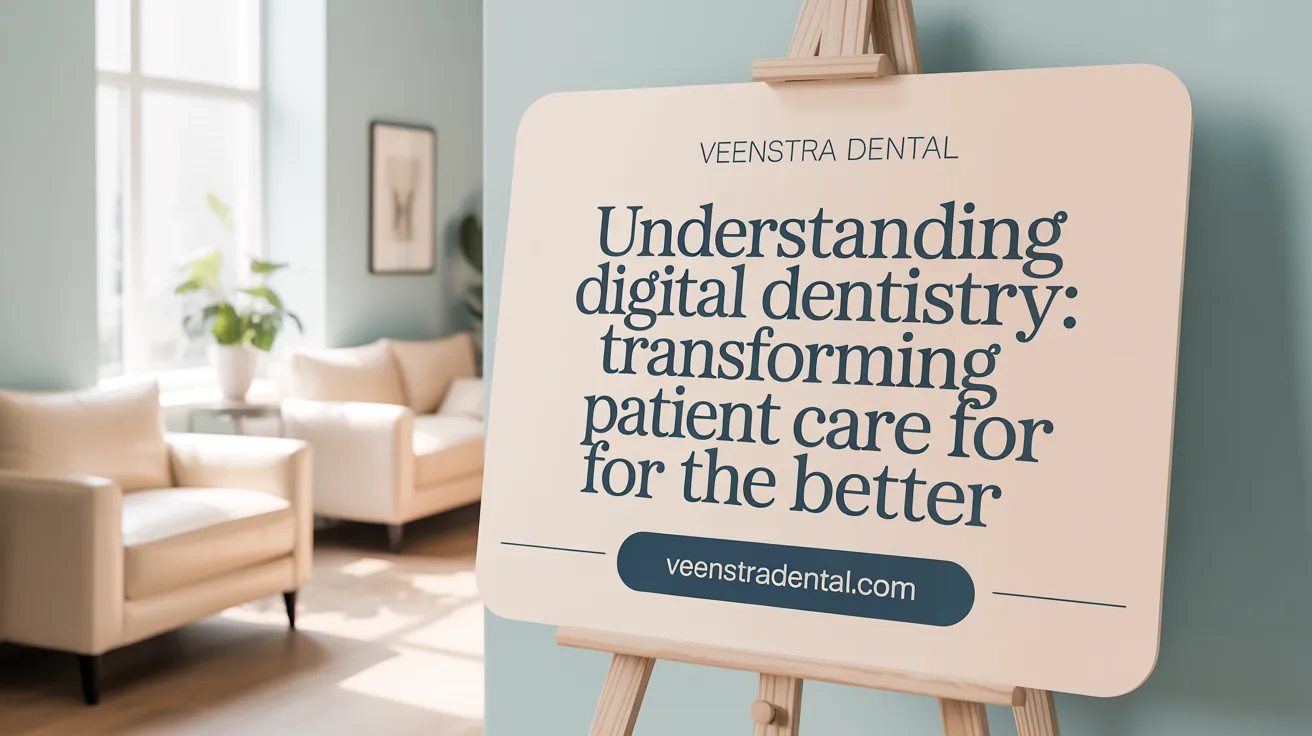
What is digital dentistry and how does it impact patient care?
Digital dentistry involves the use of cutting-edge digital tools and technologies to improve oral health diagnosis, treatment, and management. It integrates systems such as 3D imaging, intraoral scanners, CAD/CAM (computer-aided design and manufacturing), digital impressions, and artificial intelligence.
These technologies allow for highly accurate and personalized treatments. For instance, same-day restorations like crowns and bridges can be fabricated using digital impressions and CAD/CAM, reducing the number of visits needed.
The adoption of digital methods streamlines workflows, helping dental practitioners perform procedures more efficiently. This reduces the overall treatment time and minimizes potential errors that can occur with traditional techniques.
Patient comfort and understanding are also greatly enhanced through visual aids. Digital smile design and virtual treatment simulations allow patients to see expected results beforehand, increasing their confidence and satisfaction.
Overall, digital dentistry makes dental care faster, more precise, and more tailored to individual needs, ultimately improving patient outcomes and experiences.
Exploring Core Technologies Driving Digital Dentistry Today
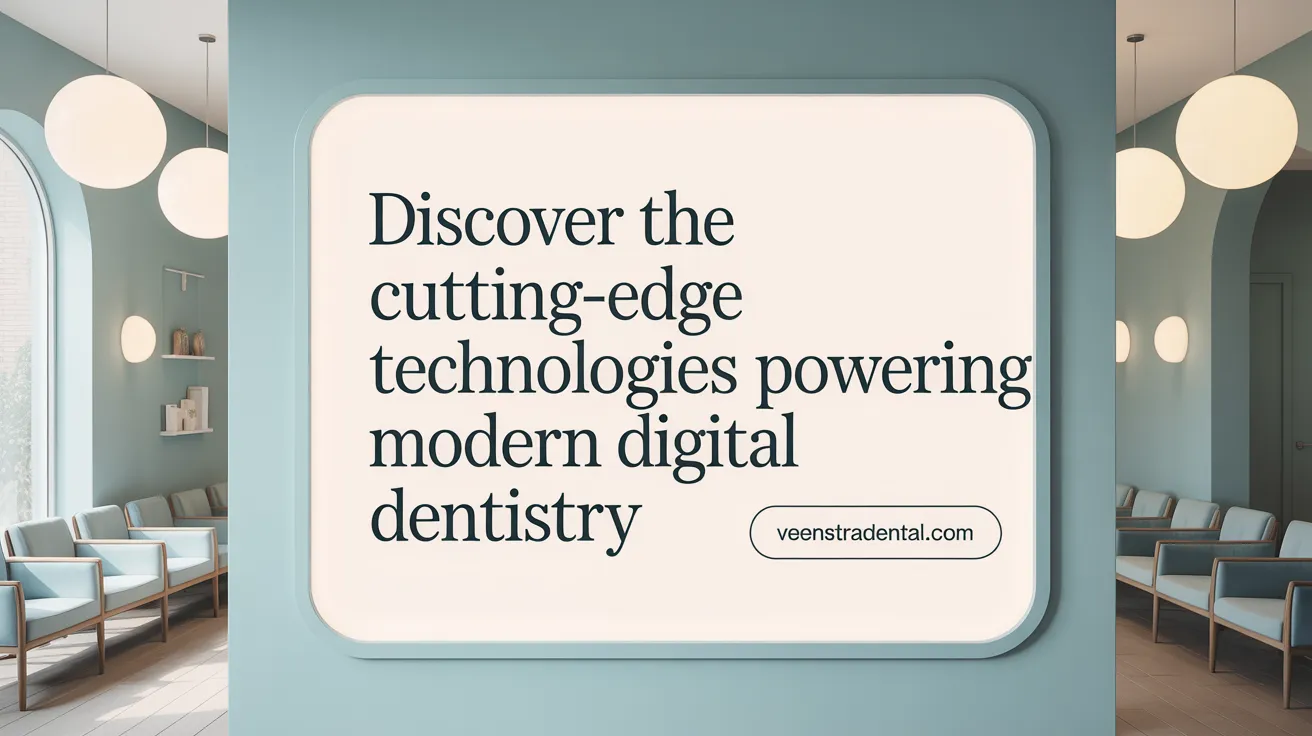
What are the key technologies currently used in digital dentistry?
Digital dentistry relies on a suite of innovative tools that significantly enhance the quality, efficiency, and comfort of dental care. Among these, intraoral scanners and digital imaging systems serve as the backbone, allowing practitioners to create highly detailed digital impressions and oral maps. These scanners produce instant, high-resolution images that improve diagnosis and patient communication.
CAD/CAM (Computer-Aided Design and Computer-Aided Manufacturing) systems enable the precise design and fabrication of custom restorations, such as crowns and bridges. This technology can often provide same-day solutions, reducing chair time and improving patient satisfaction. Complemented by 3D printing, dental labs can produce prosthetics and surgical guides rapidly, fostering a seamless workflow.
Advanced imaging techniques, including Cone Beam Computed Tomography (CBCT) and digital X-rays, deliver three-dimensional views of oral structures. CBCT scans offer detailed visualization of bone structures for precise implant placement and treatment planning, while digital X-rays provide quick, low-radiation images that support early detection of caries, fractures, and other issues.
Emerging tools like laser dentistry facilitate minimally invasive procedures, reducing discomfort and healing time. Furthermore, AI-powered diagnostics are increasingly incorporated into practice workflows, assisting clinicians in detecting early signs of diseases and optimizing treatment strategies.
Digital Smile Design and teledentistry expand the reach and personalization of dental care. Digital smile design tools help craft esthetic outcomes by simulating projected results, enhancing patient understanding and satisfaction. Meanwhile, teledentistry enables remote consultations, expanding access to specialist care and improving follow-up.
Here’s a summary of these technologies:
| Technology | Functionality | Additional Benefits |
|---|---|---|
| Intraoral scanners | Capture digital impressions of teeth and oral tissues | Faster, more comfortable than traditional molds, enhances precision |
| CAD/CAM systems | Design and manufacture restorations like crowns and bridges | Same-day restorations, high accuracy |
| 3D imaging & CBCT | Visualize oral and maxillofacial structures in detail | Accurate surgical planning, early diagnosis |
| Digital X-rays | Produce instant, clear images with less radiation | Better patient communication, quick decision-making |
| Laser dentistry | Perform minimally invasive procedures | Reduced discomfort, faster healing |
| AI diagnostics | Support early detection and complex treatment planning | Increased diagnostic accuracy, workflow efficiency |
| Digital Smile Design | Visualize cosmetic outcomes before treatment | Improves patient understanding and satisfaction |
| Teledentistry | Remote consultation and follow-up | Expands access, reduces need for physical visits |
Overall, these technologies collectively push the boundaries of dental care, making procedures more precise, efficient, and patient-friendly.
What is the future outlook for digital dental technologies?
As digital dentistry continues evolving, innovations such as augmented reality, virtual reality, and robotic-assisted surgeries are poised to further enhance clinical outcomes. The integration of artificial intelligence into diagnostics, treatment planning, and practice management is expected to improve early detection and personalized care. Continued advancements in materials for digital fabrication and the development of more accessible, user-friendly devices will likely widen adoption across practices of all sizes. These progressions promise a future where dental treatments are faster, more accurate, and tailored to individual patient needs, ultimately transforming the landscape of oral healthcare.
The Role and Advantages of Intraoral Scanners and 3D Printing
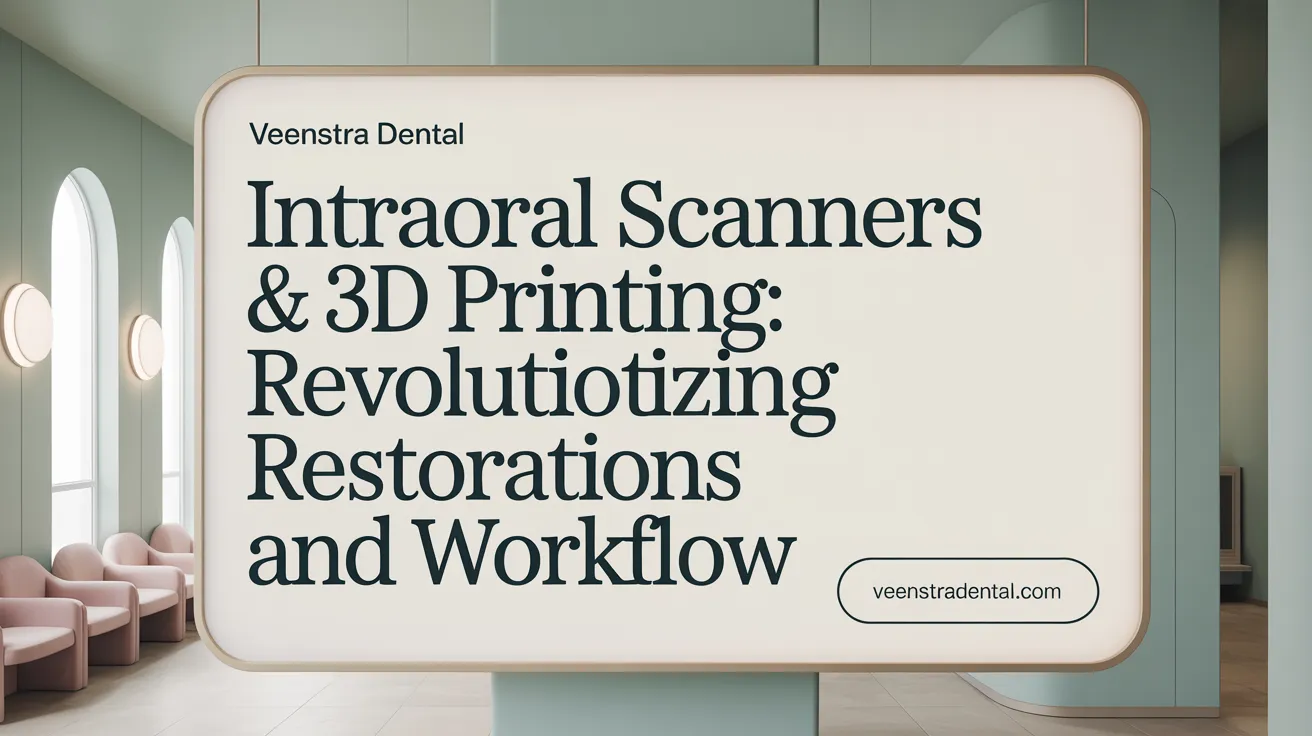
How do intraoral scanners work and what benefits do they provide?
Intraoral scanners operate by projecting structured light or confocal imaging onto teeth and surrounding soft tissues. These scanners capture detailed, high-resolution 3D images that are processed to create accurate digital models of a patient’s oral cavity. Using advanced optics, imaging sensors, and algorithms, they stitch together numerous images in real time, enabling precise virtual impressions.
The advantages of intraoral scanners are significant. They offer enhanced accuracy over traditional impressions, which rely on physical molds that can be uncomfortable and less precise. Patients appreciate their non-invasive nature, resulting in faster, more comfortable appointments. These digital impressions minimize the need for physical materials, reduce waste, and streamline workflows, allowing for quicker turnaround times. Additionally, digital files facilitate improved communication with dental laboratories and enable immediate evaluation of the impressions during the appointment, helping to plan treatments more effectively.
What are the applications of 3D printing in dentistry?
3D printing has transformed many aspects of dental practice. It is used to produce a variety of restorations, including crowns, bridges, veneers, and dentures, with high precision and personalized fit. This technology also plays a crucial role in creating surgical guides and implant models, which enhance surgical accuracy and patient outcomes. Orthodontic appliances such as aligners and retainers are now often fabricated via 3D printing, making same-day, chairside procedures feasible.
Other applications include fabricating maxillofacial prostheses, tissue scaffolds for regenerative procedures, and anatomical models for surgical planning and patient education. The ability to quickly produce customized tools and restorations improves efficiency and reduces costs. Overall, 3D printing allows for faster, more tailored treatments with better clinical results across numerous dental disciplines.
| Technology | Application | Benefit |
|---|---|---|
| Intraoral scanners | Digital impressions | Accuracy, patient comfort, efficiency |
| 3D printing | Restorations and surgical guides | Customization, same-day production |
| Both | Enhanced communication and planning | Better patient understanding and outcomes |
The ongoing development of these technologies promises even more innovative options, including improved materials and streamlined workflows for diverse dental procedures.
Artificial Intelligence and Digital Imaging Enhancing Diagnosis and Treatment
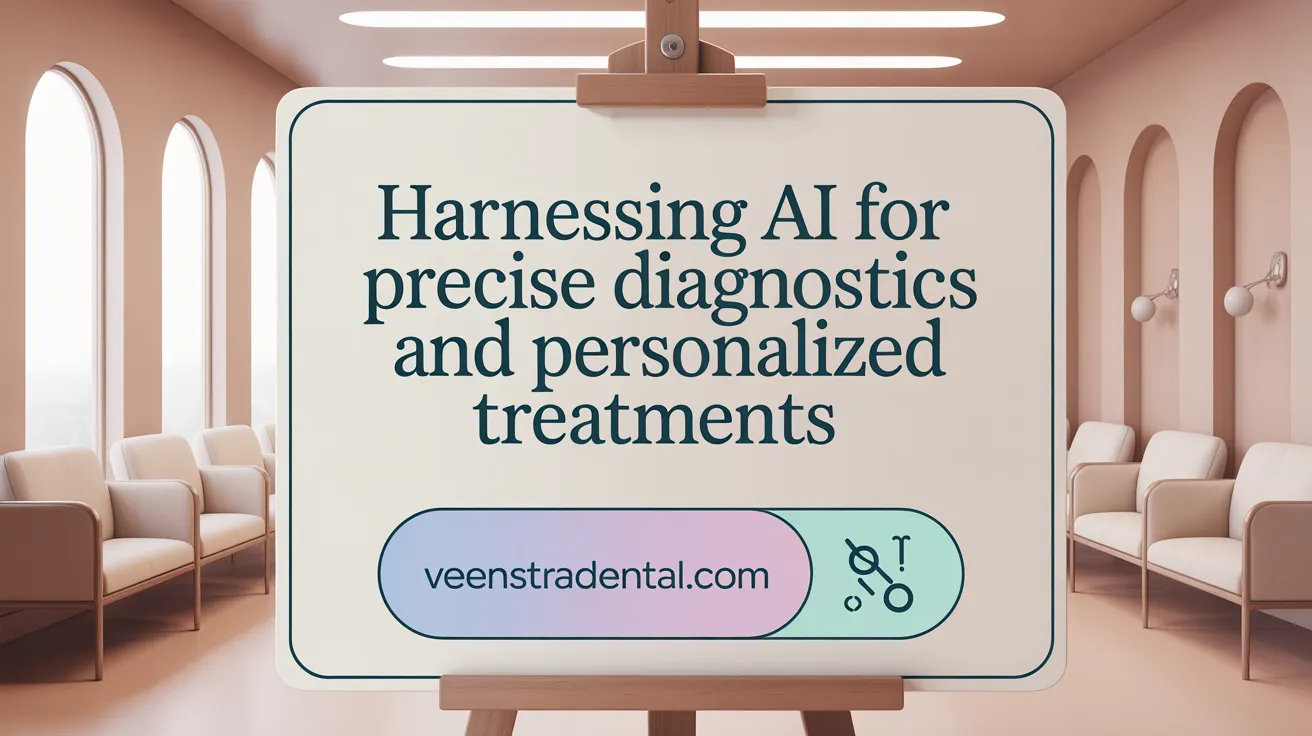
How is artificial intelligence transforming dental diagnostics and treatment?
Artificial intelligence (AI) is revolutionizing dental care by enabling earlier detection and more accurate diagnosis of various oral health issues. Advanced imaging analysis techniques, such as convolutional neural networks (CNNs) and deep learning models, help identify conditions like cavities, periodontal disease, and oral cancer more precisely. AI tools analyze radiographic, clinical, and multimodal data to assist clinicians in planning treatments with greater confidence.
In specialized areas such as implantology, orthodontics, and maxillofacial surgery, AI predicts outcomes and recommends optimal procedures. These technologies automate measurements and lesion detection, reducing human error and increasing efficiency. AI also supports personalized treatment designs, making minimally invasive procedures more accessible.
Furthermore, AI integration in practice workflows ensures consistency and accuracy in diagnoses. It helps streamline patient management, allowing for quicker decisions and better resource allocation. However, AI serves as a supportive tool, with human clinicians remaining central in interpreting data and providing empathetic care.
Despite rapid advancements, human oversight remains crucial to maintain the nuance and human touch in dental treatment.
Future Trends and the Growing Role of Digital Tools in Dental Practices
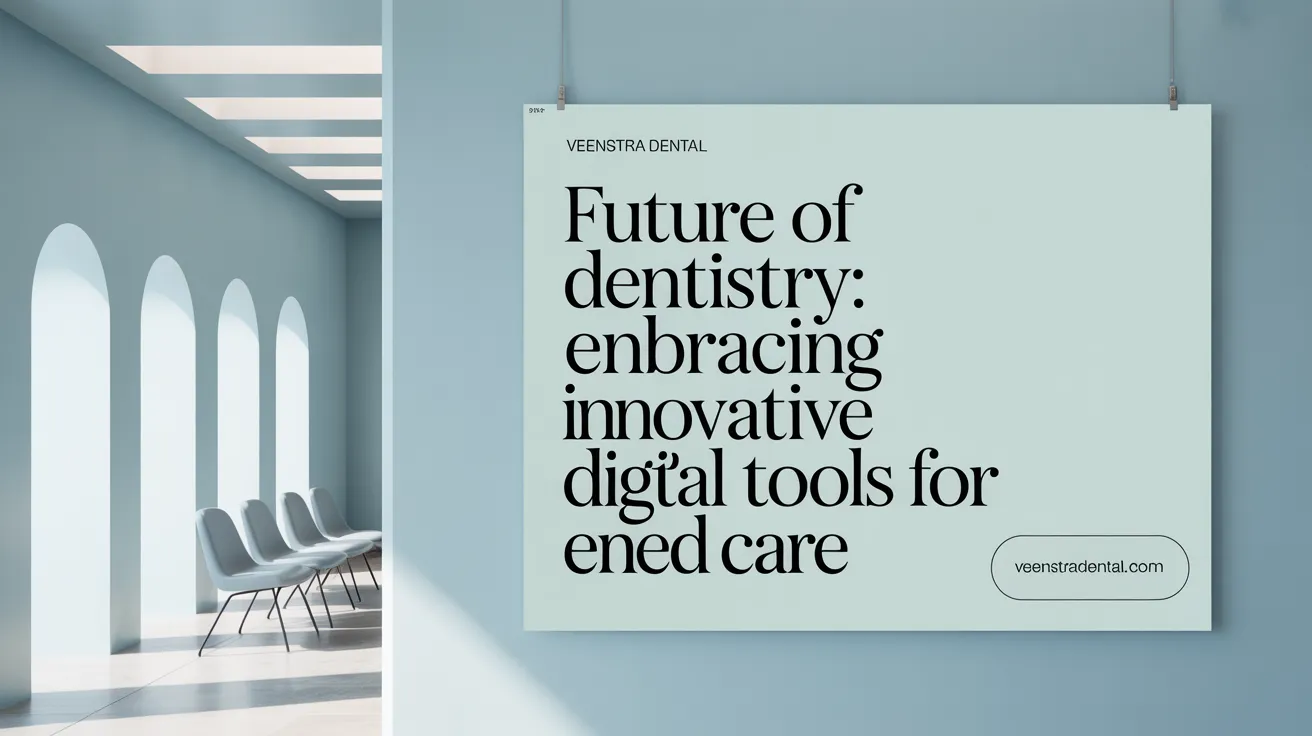 Digital dentistry continues to evolve rapidly, promising significant innovations that will shape the future of oral healthcare. Emerging technologies such as augmented reality (AR) and virtual reality (VR) are beginning to transform patient engagement and treatment preparation. These tools allow patients to virtually see their proposed smile makeovers or orthodontic adjustments beforehand, improving understanding and satisfaction.
Digital dentistry continues to evolve rapidly, promising significant innovations that will shape the future of oral healthcare. Emerging technologies such as augmented reality (AR) and virtual reality (VR) are beginning to transform patient engagement and treatment preparation. These tools allow patients to virtually see their proposed smile makeovers or orthodontic adjustments beforehand, improving understanding and satisfaction.
Teledentistry is expanding access to dental care, especially in remote areas. It facilitates virtual consultations, follow-ups, and emergency assessments, reducing the need for frequent in-office visits. Personalized dentistry, driven by advanced digital diagnostics and AI, aims to customize treatments to individual patient genetic profiles and specific needs.
Artificial intelligence (AI) is poised to become central in workflow automation and patient management. AI-powered systems can analyze vast amounts of data to support early diagnosis, predict treatment outcomes, and monitor patient progress remotely. This integration enhances precision and allows for more proactive care.
Despite these advancements, certain challenges remain. The high initial investments in digital equipment and the need for comprehensive staff training can pose barriers for some practices. Additionally, integrating new technologies into existing workflows requires careful planning to avoid disruptions.
Educational reforms are crucial to prepare future dental professionals. Curriculums need to incorporate digital skills, interdisciplinary knowledge, and ethical considerations related to AI and data security. By 2030, extensive adoption of these technologies across dental clinics worldwide is expected, leading to improved clinical results and operational efficiency.
| Technology | Expected Impact | Challenges | Future Outlook |
|---|---|---|---|
| Augmented/Virtual Reality | Enhanced patient education and treatment visualization | Cost, technical complexity | Broad clinical use for planning and training |
| Teledentistry | Increased access and convenience | Reimbursement policies, tech access | Mainstream component of routine dental care |
| AI and Automation | Improved diagnostics, workflow, monitoring | Data privacy, training | Fully integrated digital ecosystems |
| 3D Printing and CAD/CAM | Faster, personalized restorations | Material costs, technical skills | In-office manufacturing and complex cases |
Digital tools are transforming dental practice by making treatments more precise, efficient, and patient-centered. As technology advances, the integration of AR, VR, AI, and telehealth will redefine the dental landscape, promising a future where innovation enhances every aspect of oral healthcare.
Embracing the Digital Future of Dental Care
Digital dentistry represents a transformative leap forward in patient care, combining precision, efficiency, and technological innovation to improve treatment outcomes and patient experiences. As the integration of AI, 3D printing, augmented reality, and digital imaging continues to evolve, dental professionals and patients alike can look forward to more personalized, less invasive, and highly accurate care. However, realizing this future requires overcoming challenges in training, investment, and ethical considerations. With ongoing advancements and educational reforms, digital dentistry is set to become the new standard, making oral healthcare more accessible, effective, and patient-centric than ever before.
References
- Exploring the Advancements in Digital Dentistry
- The Evolution of Digital Dentistry: A Comprehensive Review
- Exploring the Future of Digital Dentistry
- The future of digital dentistry: Why intraoral sensors ... - Acteon
- What makes digital dentistry different for patients
- Artificial intelligence in dentistry: Exploring emerging ...
- Digital transformation in dentistry: A survey on trends and ...
- The Impact of Technology on Dentistry: A Dentist's Insight
- Technology Readiness Drives Digital Adoption in Dentistry
- Revolutionizing Patient Care: The Impact of Digital Dentistry
